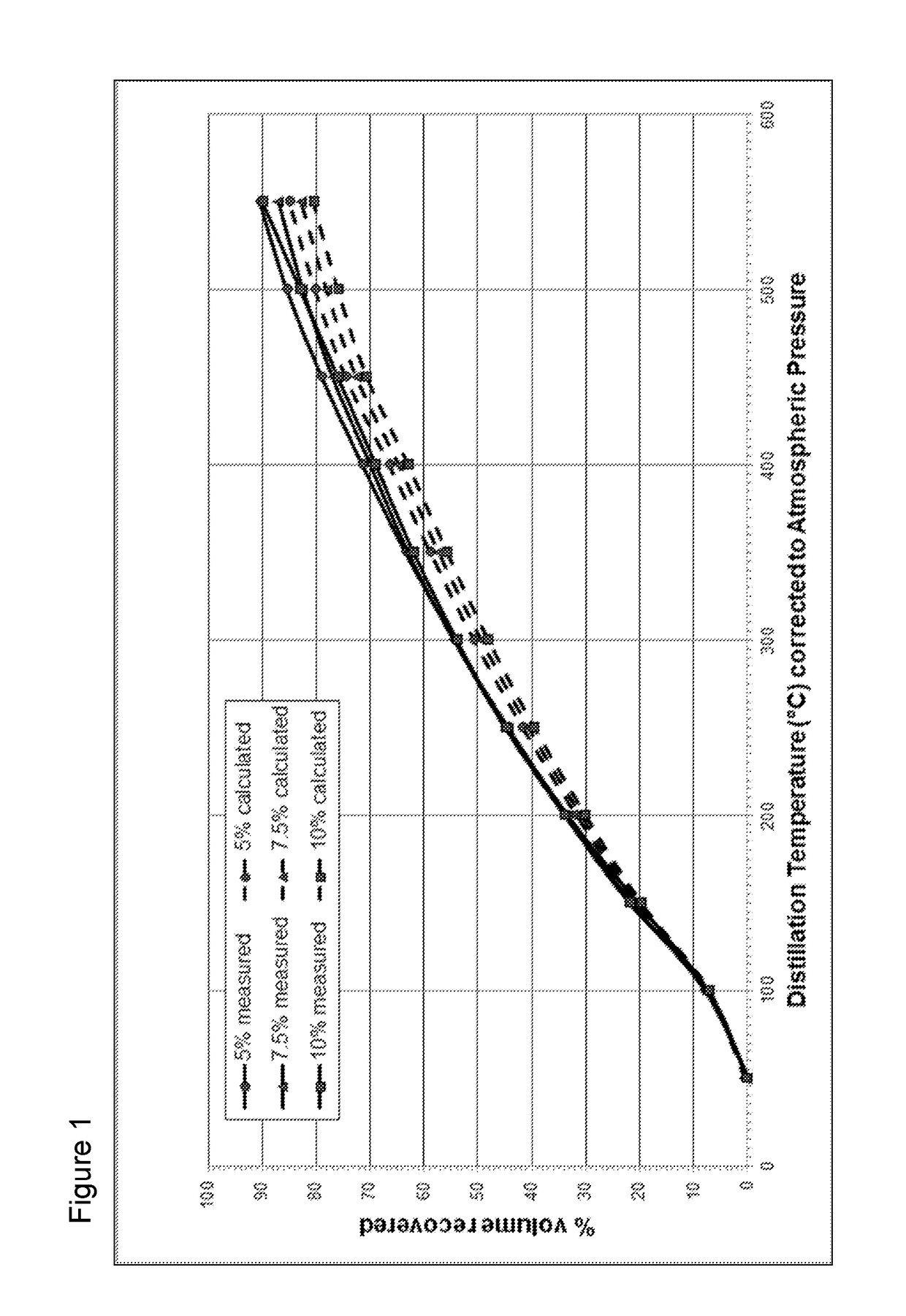Solid-liquid crude oil compositions and fractionation processes thereof
- Summary
- Abstract
- Description
- Claims
- Application Information
AI Technical Summary
Benefits of technology
Problems solved by technology
Method used
Image
Examples
example 1a
sing and Dewatering of Coal Fines May be Achieved Via a Combination of Froth Flotation Separation, Specifically Designed for Ultra Fines and Microfine Particles, Plus Mechanical and Thermal Dewatering Techniques
[0072]The coal slurry is screened, collected in a tank and froth flotation agents are added using controlled dose rates. Micro particle separators filled with process water and filtered air from an enclosed air compressor are used to sort hydrophobic carbon materials from hydrophilic mineral materials. Froth containing carbon particles overflows the tank and this froth is collected in an open, top gutter. The mineral pulp is retained in the separation tank until discharged, whereas the demineralised coal slurry is de-aerated, before being pumped to the pelletisation step. Further coal particle size reduction may be achieved, if necessary, by various known milling techniques, including ones where a hydrocarbon oil is used as a milling aid.
[0073]Mechanical dewatering of the dem...
example 1b
Coal Microfines by Grinding Larger Lumps and Particles of Coal in Wet Media
[0074]The type of coal may be selected based on favourable properties of the coal such as low ash or water content or ease of grindability (e.g. high Hardgrove Grindability Index) or reactivity. Coal microfines were obtained by a variety of standard crushing and grinding size reduction techniques in wet media followed by dewatering.[0075]1. Crush to reduce production washed, wet coal (e.g. coal D or coal F, Table 3) from 50 mm or thereabouts to approximately 6 mm, e.g. via a high pressure grinding roller mill or jaw crusher: suitable equipment is manufactured by Metso Corporation or FLSmidth, Vigerslev Allé 77, DK-2500 Valby, Copenhagen, Denmark.[0076]2. Produce a wet [0077]3. Reduce the [0078]4. Dewater from approximately 50% m to [0079]5. Dewater to [0080]a. thermal drying, such as fluidised bed, rotary, flash or belt dryers: suitable equipment is manufactured by companies, such as GEA Group Aktiengesellsch...
example 1c
Coal Microfines by Grinding Larger Lumps and Particles of Coal in a Dry State
[0082]Coal microfines were obtained by standard crushing, grinding and pulverising size reduction techniques in a dry state.[0083]1. Crush dry, raw seam coal with a jaw crusher to [0084]2. Pulverise dried coal from [0085]3. Reduce to
PUM
| Property | Measurement | Unit |
|---|---|---|
| Length | aaaaa | aaaaa |
| Length | aaaaa | aaaaa |
| Diameter | aaaaa | aaaaa |
Abstract
Description
Claims
Application Information
 Login to View More
Login to View More - R&D
- Intellectual Property
- Life Sciences
- Materials
- Tech Scout
- Unparalleled Data Quality
- Higher Quality Content
- 60% Fewer Hallucinations
Browse by: Latest US Patents, China's latest patents, Technical Efficacy Thesaurus, Application Domain, Technology Topic, Popular Technical Reports.
© 2025 PatSnap. All rights reserved.Legal|Privacy policy|Modern Slavery Act Transparency Statement|Sitemap|About US| Contact US: help@patsnap.com


